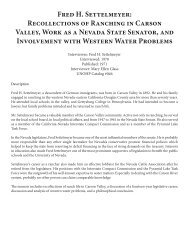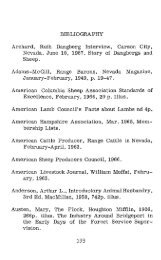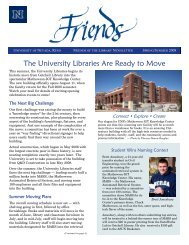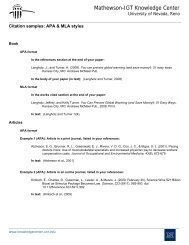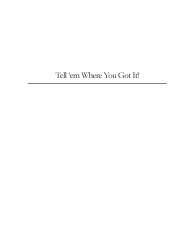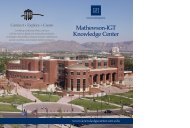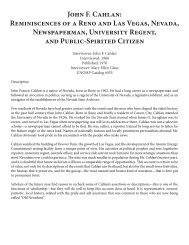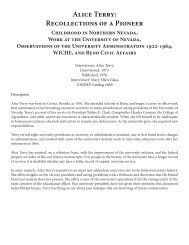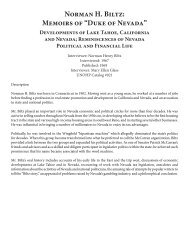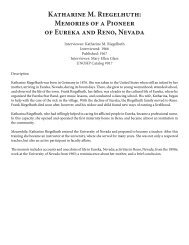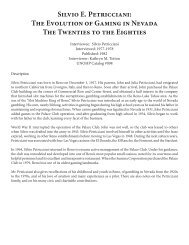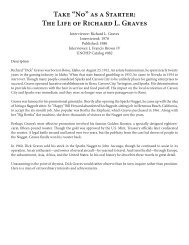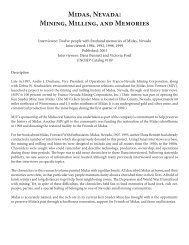Joseph P. Mosconi - University of Nevada, Reno
Joseph P. Mosconi - University of Nevada, Reno
Joseph P. Mosconi - University of Nevada, Reno
Create successful ePaper yourself
Turn your PDF publications into a flip-book with our unique Google optimized e-Paper software.
Preface to the Digital Edition<br />
Established in 1964, the <strong>University</strong> <strong>of</strong><br />
<strong>Nevada</strong> Oral History Program (UNOHP)<br />
explores the remembered past through<br />
rigorous oral history interviewing, creating a<br />
record for present and future researchers. The<br />
program’s collection <strong>of</strong> primary source oral<br />
histories is an important body <strong>of</strong> information<br />
about significant events, people, places,<br />
and activities in twentieth and twenty-first<br />
century <strong>Nevada</strong> and the West.<br />
The UNOHP wishes to make the<br />
information in its oral histories accessible<br />
to a broad range <strong>of</strong> patrons. To achieve<br />
this goal, its transcripts must speak with<br />
an intelligible voice. However, no type font<br />
contains symbols for physical gestures and<br />
vocal modulations which are integral parts<br />
<strong>of</strong> verbal communication. When human<br />
speech is represented in print, stripped <strong>of</strong><br />
these signals, the result can be a morass <strong>of</strong><br />
seemingly tangled syntax and incomplete<br />
sentences—totally verbatim transcripts<br />
sometimes verge on incoherence. Therefore,<br />
this transcript has been lightly edited.<br />
While taking great pains not to alter<br />
meaning in any way, the editor may have<br />
removed false starts, redundancies, and the<br />
“uhs,” “ahs,” and other noises with which<br />
speech is <strong>of</strong>ten liberally sprinkled; compressed<br />
some passages which, in unaltered form,<br />
misrepresent the chronicler’s meaning; and<br />
relocated some material to place information<br />
in its intended context. Laughter is represented<br />
with [laughter] at the end <strong>of</strong> a sentence in<br />
which it occurs, and ellipses are used to<br />
indicate that a statement has been interrupted<br />
or is incomplete…or that there is a pause for<br />
dramatic effect.<br />
As with all <strong>of</strong> our oral histories, while<br />
we can vouch for the authenticity <strong>of</strong> the<br />
interviews in the UNOHP collection, we<br />
advise readers to keep in mind that these are<br />
remembered pasts, and we do not claim that<br />
the recollections are entirely free <strong>of</strong> error.<br />
We can state, however, that the transcripts<br />
accurately reflect the oral history recordings<br />
on which they were based. Accordingly, each<br />
transcript should be approached with the



